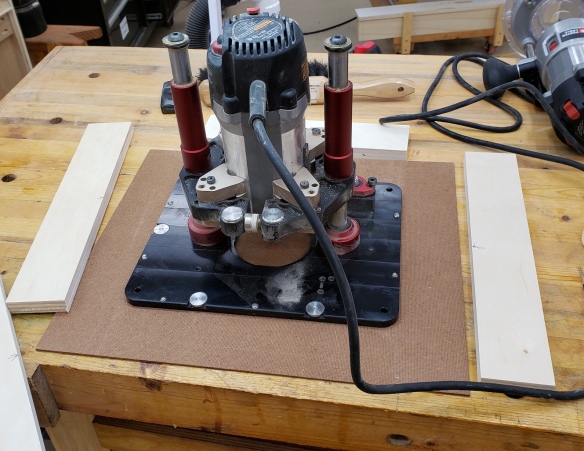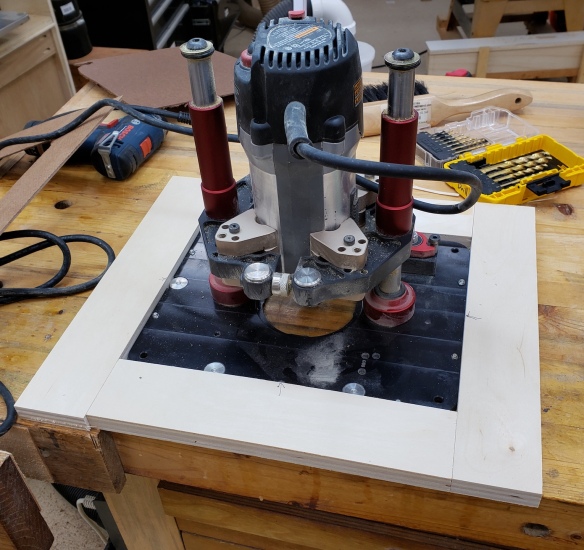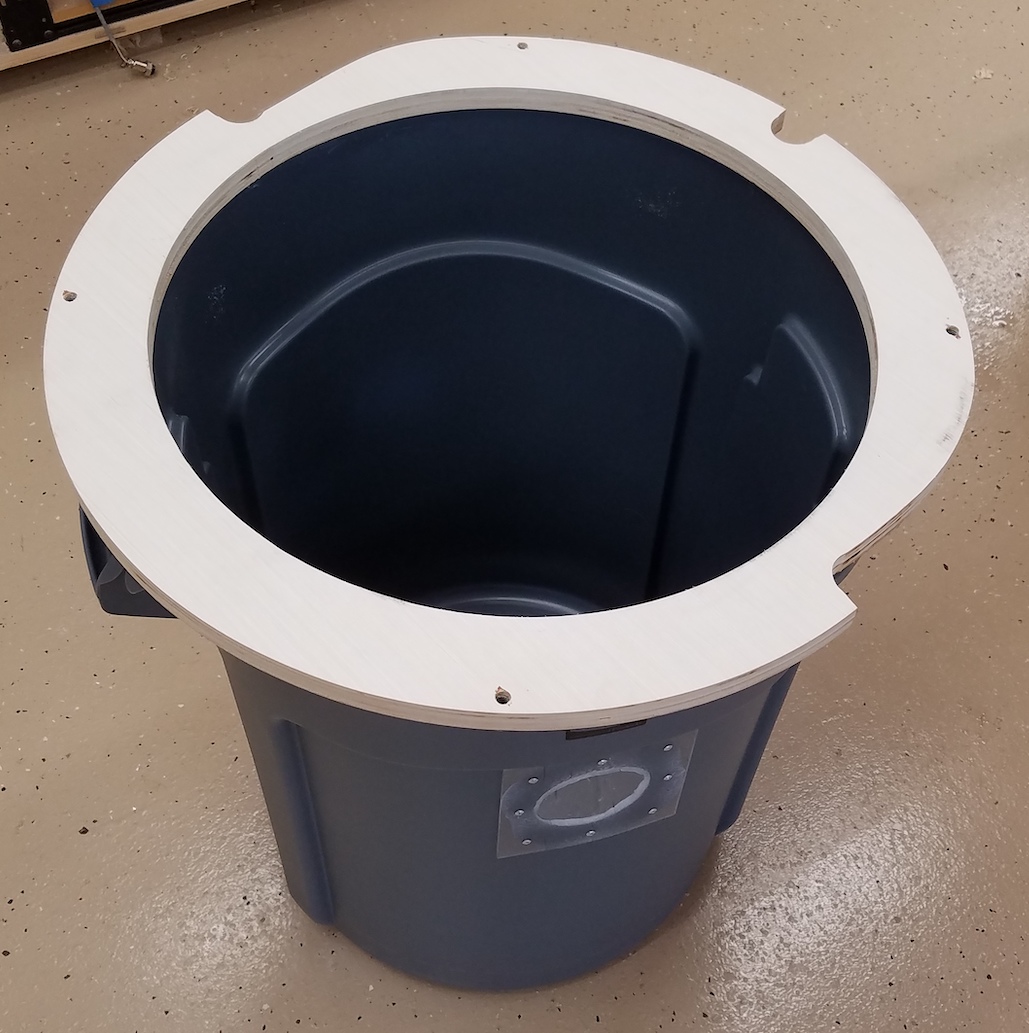I have been making good use of my new router table. It was already very capable with a flat surface and adjustable fence, but there is always room for improvement. I am going to trick it out with a few printed accessories.
I have seen dust collector chutes that sit at the end of the table and suck up dust from dado cuts. I have a big enough table that I can do some pretty wide cuts before needing to break out the handheld router. First up, here is what the critter looks like. It sits at the end of the router table and collects the dust that blows out from the slot you are cutting when doing dado work.

I made a housing with a groove around the edges that would accept some brush material from a door sweep. It turns out if you remove the brush material it comes crimped in a little metal frame. That can be cut with a heavy pair of diagonal cutters. Doing that pinches off brushes so that nothing falls out. I cut up 3 segments and glued them into the housing.
To hold it down to the table I printed a bracket with alignment features and slotted screw holes. Now the dust chute can be raised and lowered or removed. The brushes will help catch dust, but won’t interfere with a board passing over the table’s edge. It certainly isn’t an accessory I will use every day, but it was a fun build and will come in handy from time to time.

An accessory that will see far more use is a pair of rolling stock guides. They are based off a design that Jessem sells. Theirs are made of metal and the wheels don’t allow kickback. I think my version is good enough given the price difference. I found a pack of cheap rubber wheels for luggage. There is an infeed and outfeed version with the wheels angled slightly towards the fence. They can adjust to accept thin or thick stock.

I needed a few small knobs for this job and experimented with using coupling nuts. The tall nuts give a lot of surface for the printed part to bear against. I tried tightening one against a vice, and couldn’t twist it hard enough to break it by hand. I will be making more of these in the future!

Here is a quick animation of it in action. The guides keep it pressed down to the table and the angle of the wheels guides the board towards the fence. I purposefully started the board away from the fence to illustrate it being guided in.

Lastly, I spent a lot of time making sure everything on this router table was flat and precise. I want to be able to do precision joinery, and that requires fine adjustment. It can be frustrating when you are trying to fine tune in a joint and just need a little nudge out of the fence. These little jigs will secure down via the T-track on the table and run a fine screw up against the fence.

The front of the screw has a ball bearing glued into a coupling nut. This means that the fence is only touched by the very tip of a hard bearing. When you rotate the screw it is a consistent touch point centered on the axis of rotation. The bottom of the jig has rubber bumpers so it doesn’t slide around on the slick table top. The shaft is a 10-32 screw. That means every rotation is 1/32″ of an inch. The mounting block uses another coupling nut and the handle is just threaded plastic. With one of these on either side of the table you can square the fence, or move it in very carefully prescribed movements. 1/8 of a turn of both handles will adjust the fence by about the thickness of a sheet of paper!




























































































































































